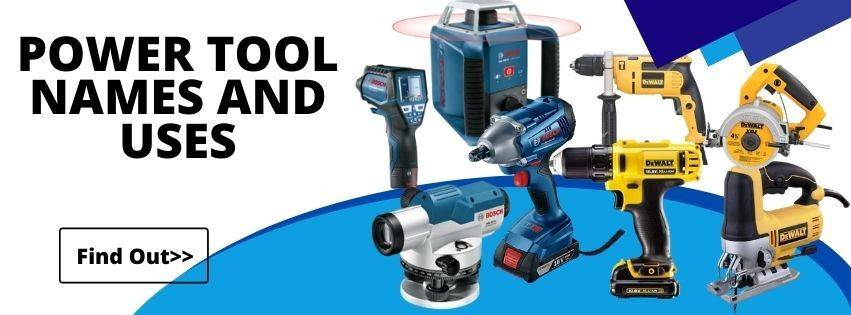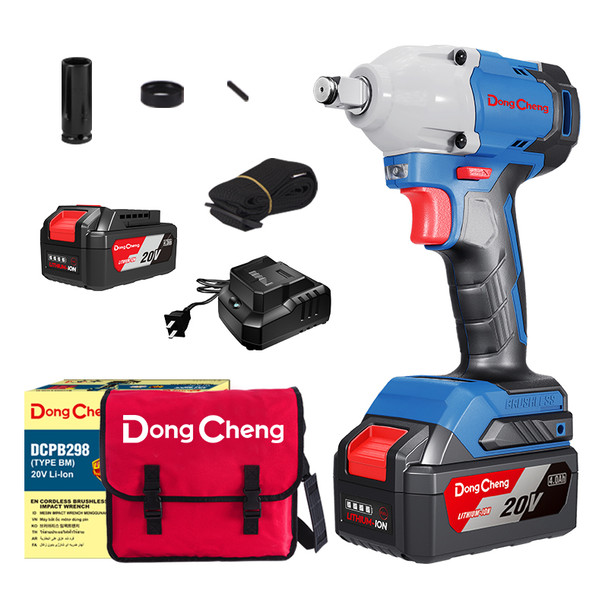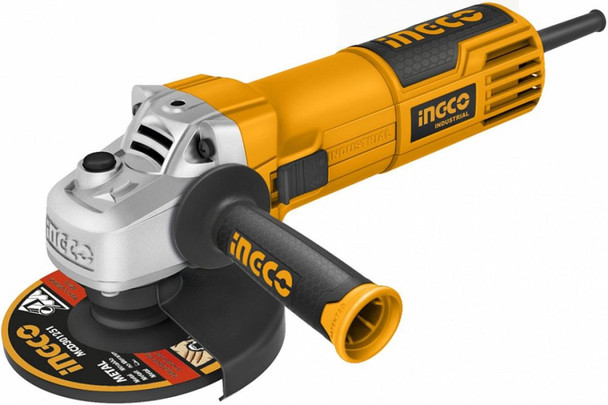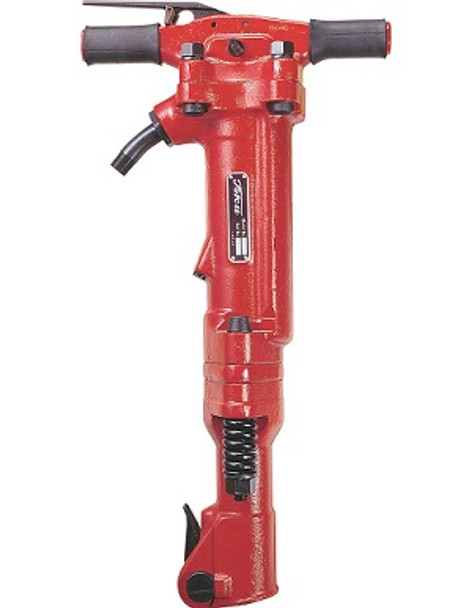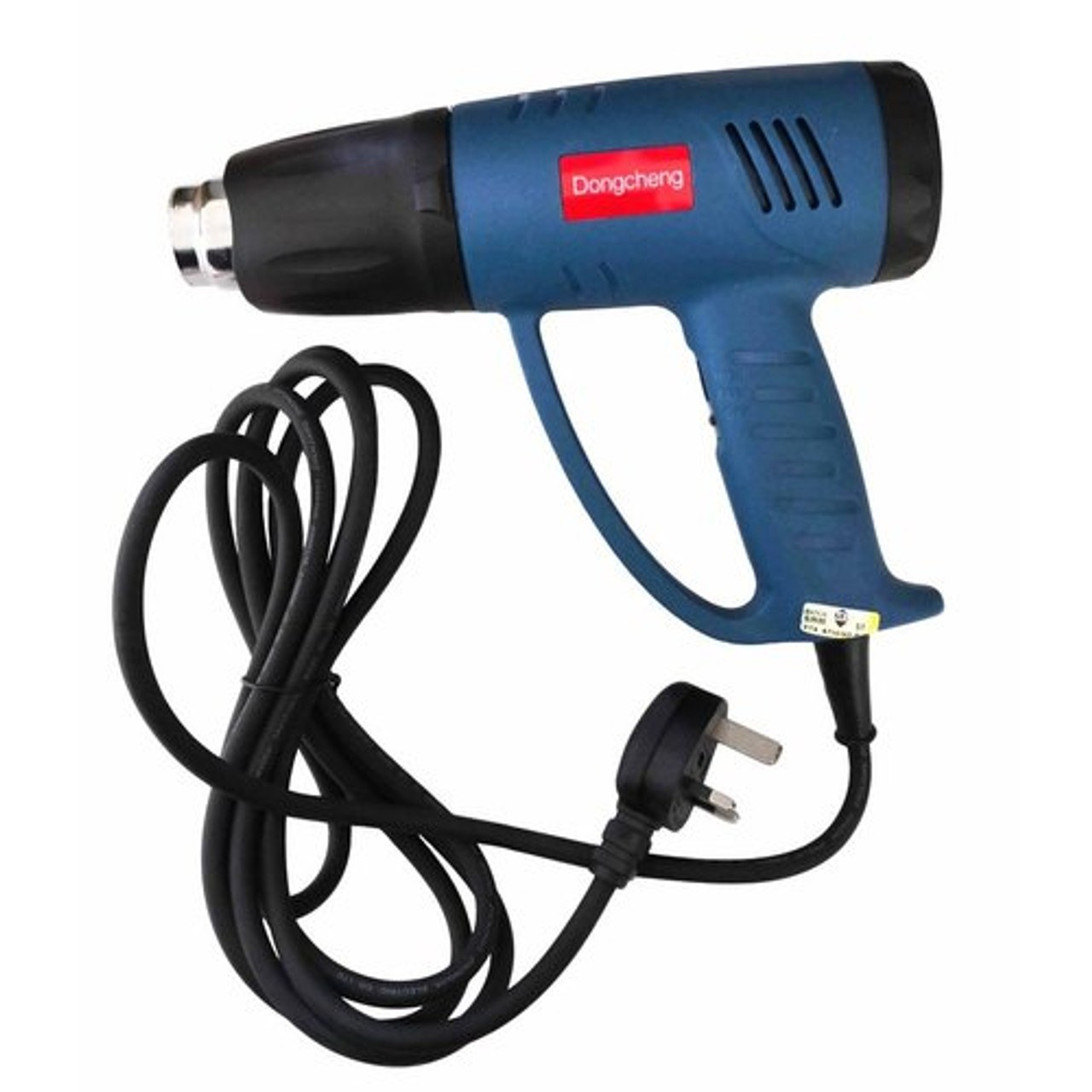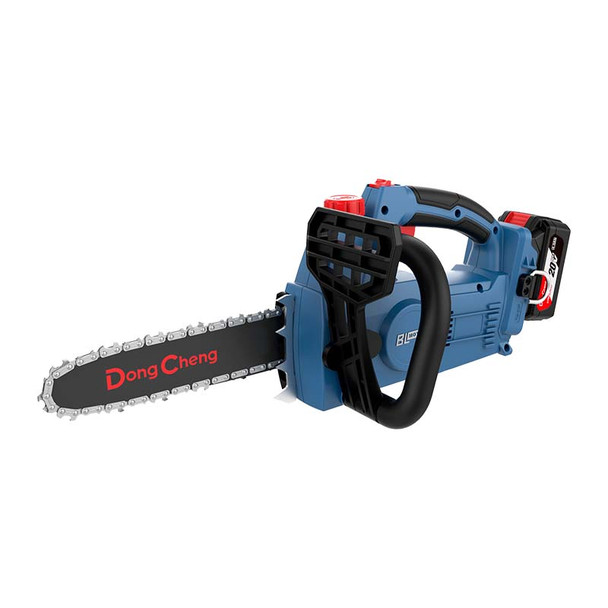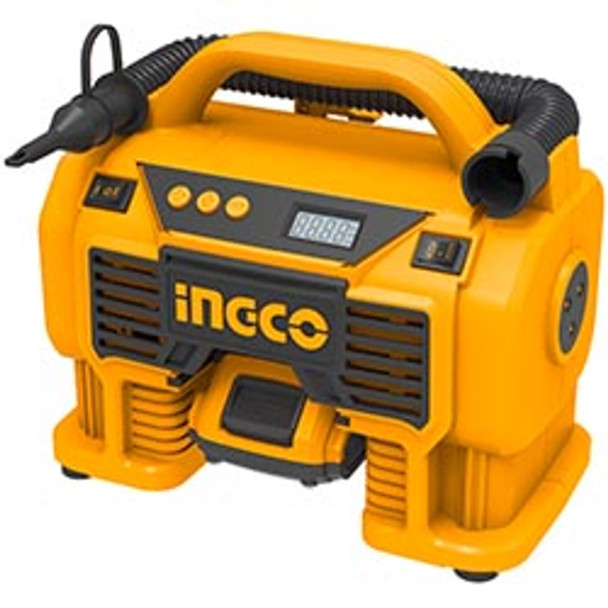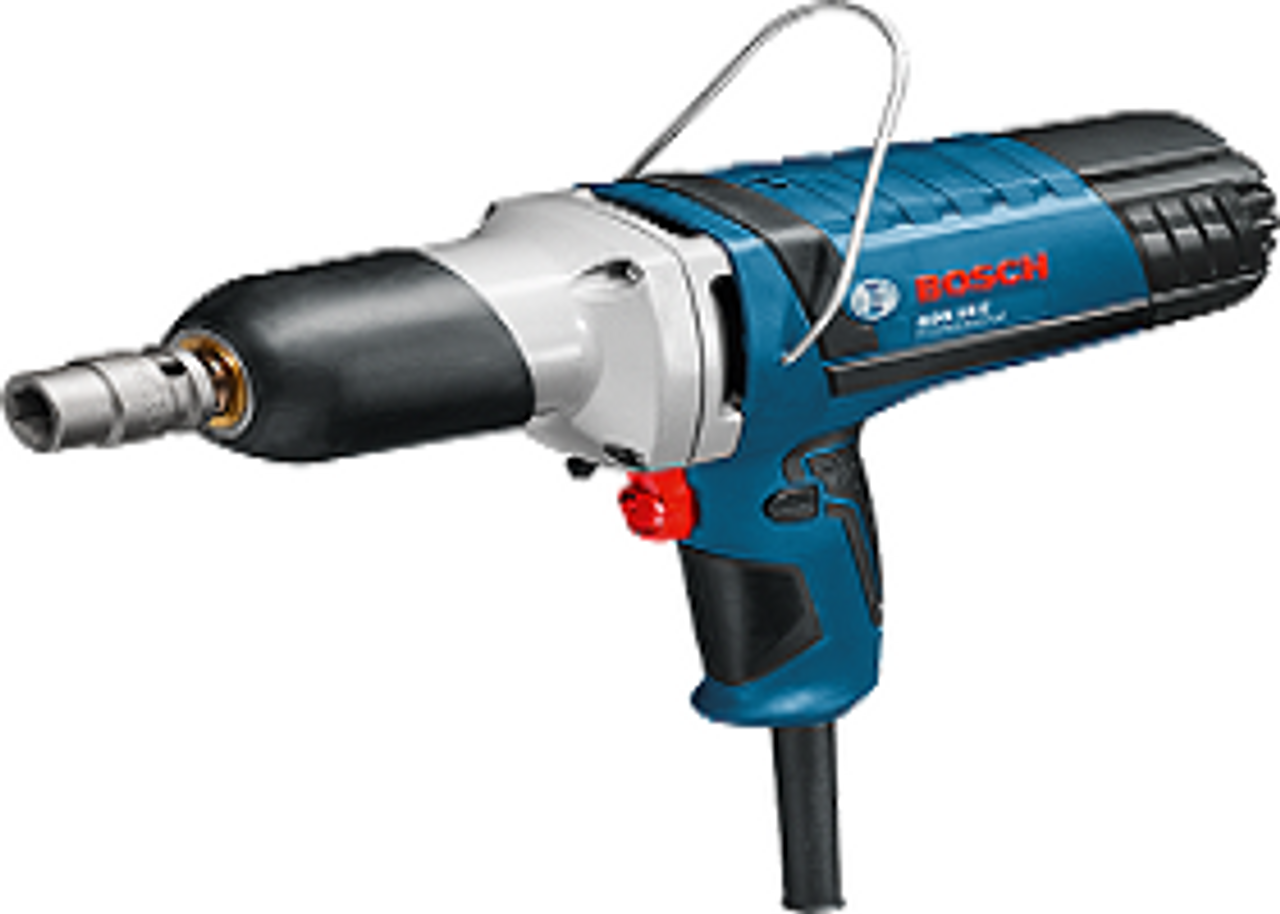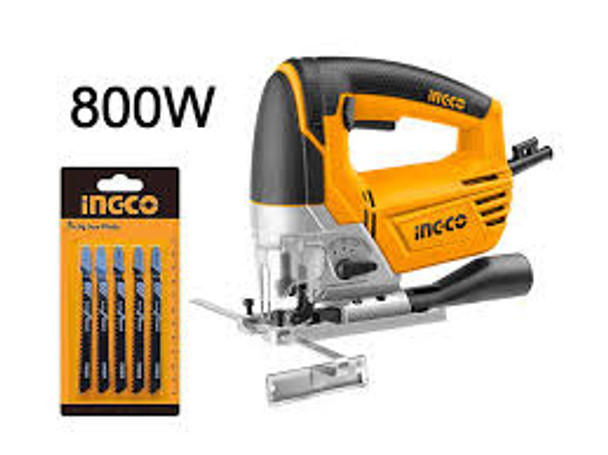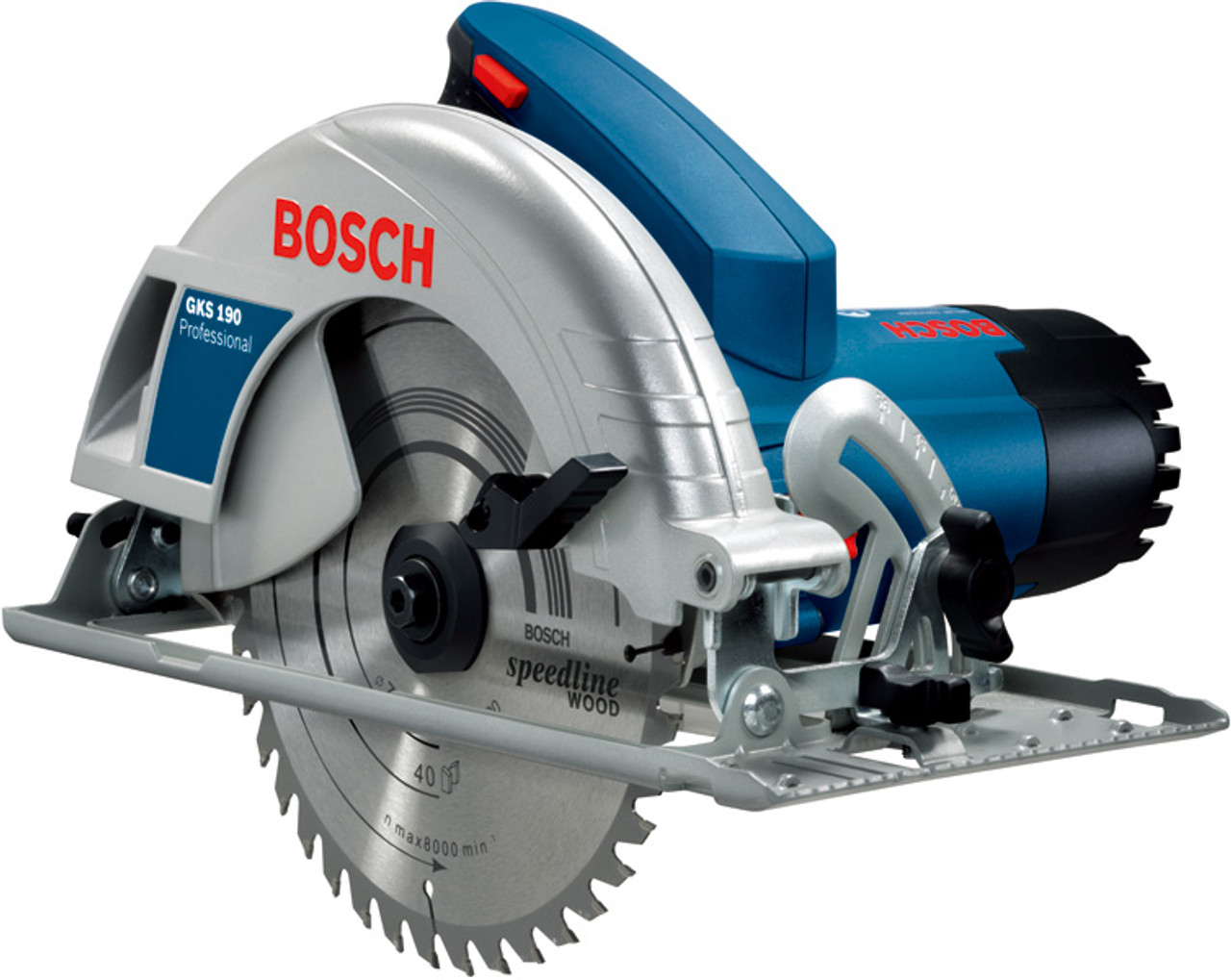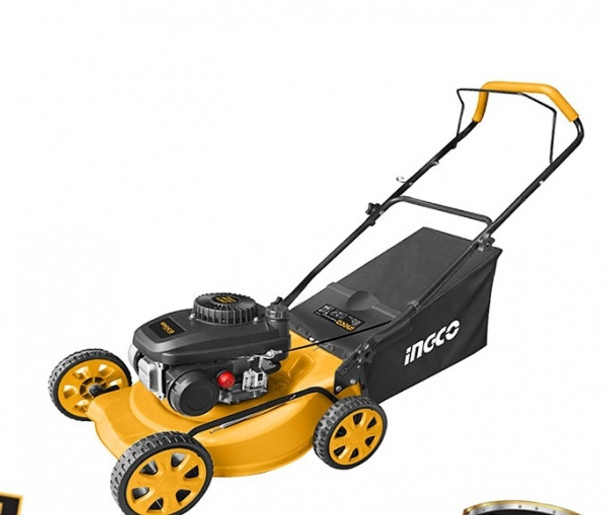POWER TOOL NAMES AND USES
A power tool is a tool that is operated by an additional power source and mechanism other than the solely manual labor used with hand tools. The most common types of power tools use electric motors. Internal combustion engines and compressed air are also commonly used. Other power sources include steam engines, direct burning of fuels and propellants, such as in powder-actuated tools, or even natural power sources such as wind or moving water. Tools directly driven by animal power are not generally considered power tools.
Get Yours Now... DongCheng Cordless Brushless Impact Wrench 16 mm 20V 4A DCPB298BM
POWER TOOLS CAN BE CLASSIFIED INTO TWO
STATIONARY:
These are power tools that are not moveable after installation. Stationary power tools, however, often have advantages in speed and precision. A typical table saw, for instance, not only cuts faster than a regular hand saw, but the cuts are smoother, straighter, and more square than what is normally achievable with a hand-held power saw. Some stationary power tools can produce objects that cannot be made in any other way. Lathes, for example, produce truly round objects.
Stationary power tools for metalworking are usually called machine tools. The term machine tool is not usually applied to stationary power tools for woodworking, although such usage is occasionally hard, and in some cases, such as drill presses and bench grinders, exactly the same tool is used for both woodworking and metalworking.
PORTABLE:
These are hand held power tools that can be moved to different location. Portable power tools have obvious advantages in mobility.
TYPES OF POWER TOOLS AND ITS USES
1. ANGLE GRINDER:
This is also known as a side grinder or disc grinder, is a handheld power tool used for grinding (abrasive cutting) and polishing. Angle grinders may be used for removing excess material from a piece. There are many different kinds of discs that are used for various materials and tasks, such as cut-off discs (diamond blade), abrasive grinding discs, grinding stones, sanding discs, wire brush wheels and polishing pads. The angle grinder has large bearings to counter side forces generated during cutting, unlike a power drill, where the force is axial.
Angle grinders are widely used in metalworking and construction, as well as in emergency rescues. They are commonly found in workshops, service garages and auto body repair shops. There are a large variety of angle grinders to choose from when trying to find the right one for the job. The most important factors in choosing the right grinder are the disc size and the power of the motor. Other factors include power source (pneumatic or electric), rpm, and arbor size. Generally disc size and power increase together. Disc size is usually measured in inches or millimeters. Discs
for pneumatic grinders also come much smaller. Pneumatic grinders are generally used for lighter duty jobs where more precision is required. This is likely because pneumatic grinders can be small and light yet remain powerful, because they do not contain heavy copper motor windings, while it is harder for an electric grinder to maintain adequate power with smaller size. Electric grinders are more commonly used for larger, heavy duty jobs. However, there are also small electric grinders and large pneumatic grinders. Angle grinders was developed originally as tools for rigid abrasive discs, the availability of an interchangeable power source has encouraged their use with a wide variety of cutters and attachments. Angle grinders can be powered by an electric motor or compressed air. The motor drives a geared head at a right-angle on which is mounted an abrasive disc or a thinner cut-off disc, either of which can be replaced when worn. Angle grinders typically have an adjustable guard and a side-handle for two-handed operation. Certain angle grinders, depending on their speed range, can be used as sanders, employing a sanding disc with a backing pad or disc. The backing system is typically made of hard plastic, phenolic resin, or medium-hard rubber depending on the amount of flexibility desired. Angle grinders are standard equipment in metal fabrication shops and on construction sites. They are also common in machine shops, along with die grinders and bench grinders.
Buy Online... 4.5" Angle Grinder INGCO AG7108
2. JACKHAMMER (pneumatic drill or demolition hammer):
Jackhammers are pneumatic or electro-mechanical tool that combines a hammer directly with a chisel. It was invented by William Mcreavy, who then sold the patent to Charles Brady King. Hand-held jackhammers are generally powered by compressed air, but some are also powered by electric motors. Larger jackhammers, such as rig-mounted hammers used on construction machinery, are usually hydraulically powered. Jackhammers are typically used to break up rock, pavement, and concrete. A jackhammer operates by driving an internal hammer up and down. The hammer is first driven down to strike the back and then back up to return the hammer to the original position to repeat the cycle. The effectiveness of the jackhammer is dependent on how much force is applied to the tool. It is generally used like a hammer to break the hard surface or rock in construction works and it is not considered under earth moving equipment, along with its accessories (i.e., pusher leg, lubricator). A full-sized portable jackhammer is impractical for use against walls and steep slopes, except by a very strong person, as the user would have to both support the weight of the tool, and push the tool back against the work after each blow. A technique developed by experienced workers is a two-man team to overcome this obstacle of gravity: one operates the hammer and the second assists by holding the hammer either on his shoulders or cradled in his arms. Both use their combined weight to push the bit into the workface. This method is commonly referred to as horizontal jackhammering.
Another method is overhead jackhammering, requiring strength conditioning and endurance to hold a smaller jackhammer, called a rivet buster, over one's head. To make overhead work safer, a platform can be used. One such platform is a positioner–actuator–manipulator (PAM). This unit takes all the weight and vibration from the user.
Buy Online... Pneumatic Jackhammer 25mm Hellog
3. HEAT GUN:
This is a device used to emit a stream of hot air, usually at temperatures between 100 °C and 550 °C (200-1000 °F), with some hotter models running around 760 °C (1400 °F), which can be held by hand. Heat guns usually have the form of an elongated body pointing at what is to be heated, with a handle fixed to it at right angles and a trigger, in the same general layout as a handgun, hence the name. A lighter duty heat gun is similar to a portable Hair dryer. Heat guns are used in physics, materials science, chemistry, engineering, and other laboratory and workshop settings. Different types of heat gun operating at different temperatures and with different airflow can be used to strip paint, shrink heat shrink tubing, shrink film, and shrink wrap packaging, dry out damp wood, bend and weld plastic, soften adhesives, and thaw frozen pipes. Heat guns, often called hot air guns or hot air stations for this application, are used in electronics to de-solder and rework surface-mounted circuit board components. Heat guns are also used for functional testing of overheat protection devices, in order to safely simulate an overheat condition. Household use of heat guns is common. Heat guns and lighter weight hair driers are sometimes used to remove paint splashes and wallpapers. Heat is also used to bend plastics with the help of the gun and soften some types of adhesives. These guns also help in thawing frozen pipes and shrink wraps. Heat guns can be used to roast coffee beans, sear meat and melt sugar, chocolate, etc. They can also be used to bend PVC pipes. Heat guns are sometimes used to help upholster furniture and repair leather and vinyl goods. For removing lead paint temperatures below 590 °C (1100 °F) are used to minimize vaporization.
Buy Online... Dongcheng Heatgun 2000W/50-600 °C DQB2000
4. CHAINSAW:
This is a portable gasoline, electric, or battery-powered saw that cuts with a set of teeth attached to a rotating chain driven along a guide bar. It is used in activities such as tree felling, limbing, bucking, pruning, cutting firebreaks in wildland fire suppression, and harvesting of firewood. Chainsaws with specially designed bar-and-chain combinations have been developed as tools for use in chainsaw art and chainsaw mills. Specialized chainsaws are used for cutting concrete during construction developments. Chainsaws are sometimes used for cutting ice; for example, ice sculpture and winter swimming in Finland.
Buy Online... DongCheng Cordless brushless chain saw -DCML250
5. AIR COMPRESSOR:
Air compressors are devices that converts power (using an electric motor, diesel or gasoline engine, etc.) into potential energy stored in pressurized air (i.e., compressed air). By one of several methods, an air compressor forces more and more air into a storage tank, increasing the pressure. When the tank's pressure reaches its engineered upper limit, the air compressor shuts off. The compressed air, then, is held in the tank until called into use. The energy contained in the compressed air can be used for a variety of applications, utilizing the kinetic energy of the air as it is released and the tank depressurizes. When tank pressure reaches its lower limit, the air compressor turns on again and re-pressurizes the tank. An air Compressor must be differentiated from a pump because it works for any gas/air, while pumps work on a liquid.
There are two main types of air-compressor pumps:
a) Oil-injected and
b) Oil-less.
The oil-less system has more technical development, but is more expensive, louder and lasts for less time than oil-lubed pumps. The oil-less system also delivers air of better quality. Air compressors are designed to utilize a variety of power sources. Air compressors have many uses, including: supplying high-pressure clean air to fill gas cylinders, supplying moderate-pressure clean air to a submerged surface supplied diver, supplying moderate-pressure clean air for driving some office and school building pneumatic HVAC control system valves, supplying a large amount of moderate-pressure air to power pneumatic tools, such as jackhammers, filling high pressure air tanks (HPA), for filling tires, and to produce large volumes of moderate-pressure air for large-scale industrial processes (such as oxidation for petroleum coking or cement plant bag house purge systems). Most air compressors either are reciprocating piston type, rotary vane or rotary screw. Centrifugal compressors are common in very large applications, while rotary screw, scroll and reciprocating air compressors are favored for smaller, portable applications.
Buy Online... INGCO Lithium-Ion Auto Air Compressor INGCO CACLI2002
6. PRESSURE WASHER OR POWER WASHER:
Pressure Washers make use of high-pressure water spray to remove loose paint, mold, grime, dust, mud, chewing gum and dirt from surfaces and objects such as buildings, vehicles and concrete surfaces. The volume of a mechanical pressure washer is expressed in gallons or liters per minute, often designed into the pump and not variable. The pressure, expressed in pounds per square inch, pascals, or bar, is designed into the pump but can be varied by adjusting the unloader valve.
The terms pressure washing and power washing are used interchangeably in many scenarios.
Buy Online... DongCheng High Pressure Washer DQW5.5/7 PLUS
7. IMPACT WRENCH:
The Impact Wrench also known as an impactor, impact gun, air wrench, air gun, rattle gun, torque gun, windy gun. It is a socket wrench power tool designed to deliver high torque output with minimal exertion by the user, by storing energy in a rotating mass, then delivering it suddenly to the output shaft. It was invented by Robert H. Pott of Evansville, Indiana.
Compressed air is the most common power source, although electric or hydraulic power is also used, with cordless electric devices becoming increasingly popular since the mid-2000s.
Impact wrenches are widely used in many industries, such as automotive repair, heavy equipment maintenance, product assembly, major construction projects, and any other instance where a high torque output is needed. For product assembly, a pulse tool is commonly used, as it features a reactionless tightening while reducing the noise levels the regular impacts suffer from. Pulse tools use oil as a medium to transfer the kinetic energy from the hammer into the anvil. This gives a smoother impulse, a slightly lower torque to weight ratio and a possibility to design a shut off mechanism that shuts the tool down when achieving the correct torque. Pulse tools are not referred to as "impact wrenches" as the performance and technology are not the same.
Impact wrenches are available in every standard socket wrench drive size, from small ¼" drive tools for small assembly and disassembly, up to 3½" and larger square drives for major construction. Impact wrenches are one of the most commonly used air tools.[citation needed]
In operation, a rotating mass is accelerated by the motor, storing energy, then suddenly connected to the output shaft (the anvil), creating a high-torque impact. The hammer mechanism is designed such that after delivering the impact, the hammer is again allowed to spin freely, and does not stay locked. With this design, the only reaction force applied to the body of the tool is the motor accelerating the hammer, and thus the operator feels very little torque, even though a very high peak torque is delivered to the socket. (This is similar to a conventional hammer, where the user applies a small, constant force to swing the hammer, which generates a very large impulse when the hammer strikes an object.) The hammer design requires a certain minimum torque before the hammer is allowed to spin separately from the anvil, causing the tool to stop hammering and instead smoothly drive the fastener if only low torque is needed, rapidly installing/removing the fastener.
Buy Online... Bosch GDS 18 E Professional Impact Wrench
8. JIGSAW:
This is a saw which uses a reciprocating blade to cut irregular curves, such as stenciled designs, in wood, metal, or other materials. Jigsaws first emerged in the 19th century and employed a treadle to operate the blade. The modern portable jigsaw was introduced in 1947 by Scintilla AG (later acquired by Bosch) . A jigsaw power tool is made up of an electric motor and a reciprocating saw blade. Jigsaws with sole plates that have a beveling function can cut angles typically up to 45 degrees relative to the normal vertical stroke to make miter joints. what are now usually called scroll saws were often referred to as jigsaws. A Jigsaw works by attaching a blade accessory to the tool. There are various types of blades which includes T-shank blades and U-shank blades. T-Shank blades are the industry-standard professional interface that provides a longer life and a tighter fit from the blade to the tool. Tooth design is important for the performance of a blade. The tooth spacing, tooth shape, and cutting angle are important in providing speed, cleanliness of cuts, and optimal performance. A side set and ground tooth is designed for clean and fast cuts in wood and plastics. Wavy set and milled teeth will cut most metals as well as plastics. A side set and milled tooth works with fast and rougher cuts in wood and plastics. A ground and taper ground tooth is for very precise, fine and clean cuts in wood. There are also reduced-kerf carbide and diamond grit edges for fast cutting in hard materials.
Buy Online... Jig Saw 800W - INGCO JS80028
9. CIRCULAR SAW:
This is a tool used for cutting many materials such as wood, masonry, plastic, or metal and may be hand-held or mounted to a machine, it was invented in the late 18th century. A Circular saw is a power-saw using a toothed or abrasive disc or blade to cut different materials using a rotary motion spinning around an arbor. A hole saw and ring saw also use a rotary motion but are different from a circular saw. Circular saws may also be loosely used for the blade itself. In woodworking the term "circular saw" refers specifically to the hand-held type and the table saw and chop saw are other common forms of circular saws. Circular saw blades are specially designed for each particular material they are intended to cut and in cutting wood are specifically designed for making rip-cuts, cross-cuts, or a combination of both. Circular saws are commonly powered by electricity, but may be powered by a gasoline engine or a hydraulic motor which allows it to be fastened to heavy equipment, eliminating the need for a separate energy source.
Buy Online... Bosch Circular Saw GKS 190
10. LAWN MOWER (also known as mower, grass cutter or lawnmower) :
The Lawn Mower is a machine used to cut grass at an even height with the aid of one or more revolving blades. The height of the cut grass may be fixed by the design of the mower, but generally is adjustable by the operator, typically by a single master lever, or by a lever or nut and bolt on each of the machine's wheels. The blades may be powered by manual force, with wheels mechanically connected to the cutting blades so that when the mower is pushed forward, the blades spin, or the machine may have a battery-powered or plug-in electric motor. The most common self-contained power source for lawn mowers is a small (typically one cylinder) internal combustion engine. Smaller mowers often lack any form of propulsion, requiring human power to move over a surface; "walk-behind" mowers are self-propelled, requiring a human only to walk behind and guide them. Larger lawn mowers are usually either self-propelled "walk-behind" types, or more often, are "ride-on" mowers, equipped so the operator can ride on the mower and control it. A robotic lawn mower ("lawn-mowing bot", "mowbot", etc.) is designed to operate either entirely on its own, or less commonly by an operator by remote control.
Buy Online... Gasoline Lawn Mower 4.8hp INGCO GLM196201
There are different types of mowers, each suited to a particular scale and purpose.
Non-powered push mowers: This is the smallest type, they are suitable for small residential lawns and gardens.
Electrical or piston engine-powered push-mowers are used for larger residential lawns (although there is some overlap).
Riding mowers, which sometimes resemble small tractors are larger than push mowers and are suitable for large lawns, although commercial riding lawn mowers (such as zero-turn mowers) can be "stand-on" types, and often bear little resemblance to residential lawn tractors, being designed to mow large areas at high speed in the shortest time possible.
The largest multi-gang (multi-blade) mowers are mounted on tractors and are designed for large expanses of grass such as golf courses and municipal parks, although they are ill-suited for complex terrain.
There are different styles of blade used in lawn mower which includes:
Rotary mowers: These are mowers with Single blade that rotates about a single vertical axis.
Cylinder or reel mowers: These are mowers with cutting bar and multiple blade assembly that rotates about a single horizontal axis, although in some versions, the cutting bar is the only blade, and the rotating assembly consists of flat metal pieces which force the blades of grass against the sharp cutting bar.
Frequently Asked Questions
Q1 What is the most common type of power tool used?
The most widely used types of power tools have electric motors. Internal combustion engines and compressed air are also widely utilized. To put it simply, power tools are any implements that run on electricity.
Q2 Why are power tools called power tools?
"A tool powered by any power source outside of direct human provided power and propulsion" is the fundamental definition of a power tool. Power tools can be used for home or DIY projects, building, maintenance, and even simple house upgrades.
Q3 What is the difference between a machine and a power tool?
Machine tools are used to cut, shape, or smooth metal. They are propelled by electricity or an internal combustion engine. On the other side, hand tools are powered by human strength rather than electricity or an engine.
Related Articles
What Power Tools Do Electricians Use
What Power Tools Do Carpenters Use
Recent Posts
-
How to Choose the Right Industrial Cleaning Service Provider
Key takeawayThoroughly Assess Your Needs and Providers: Understand your specific industrial cle …Jul 26, 2024 -
Floor Paint Maintenance: How to Keep Your Floors Looking Their Best
Maintaining your painted floors is essential for preserving their beauty and extending their lifespa …Jul 25, 2024 -
The Best Floor Paint for Different Types of Flooring
When it comes to revitalizing your home's flooring, choosing the right paint can make all the d …Jul 19, 2024

